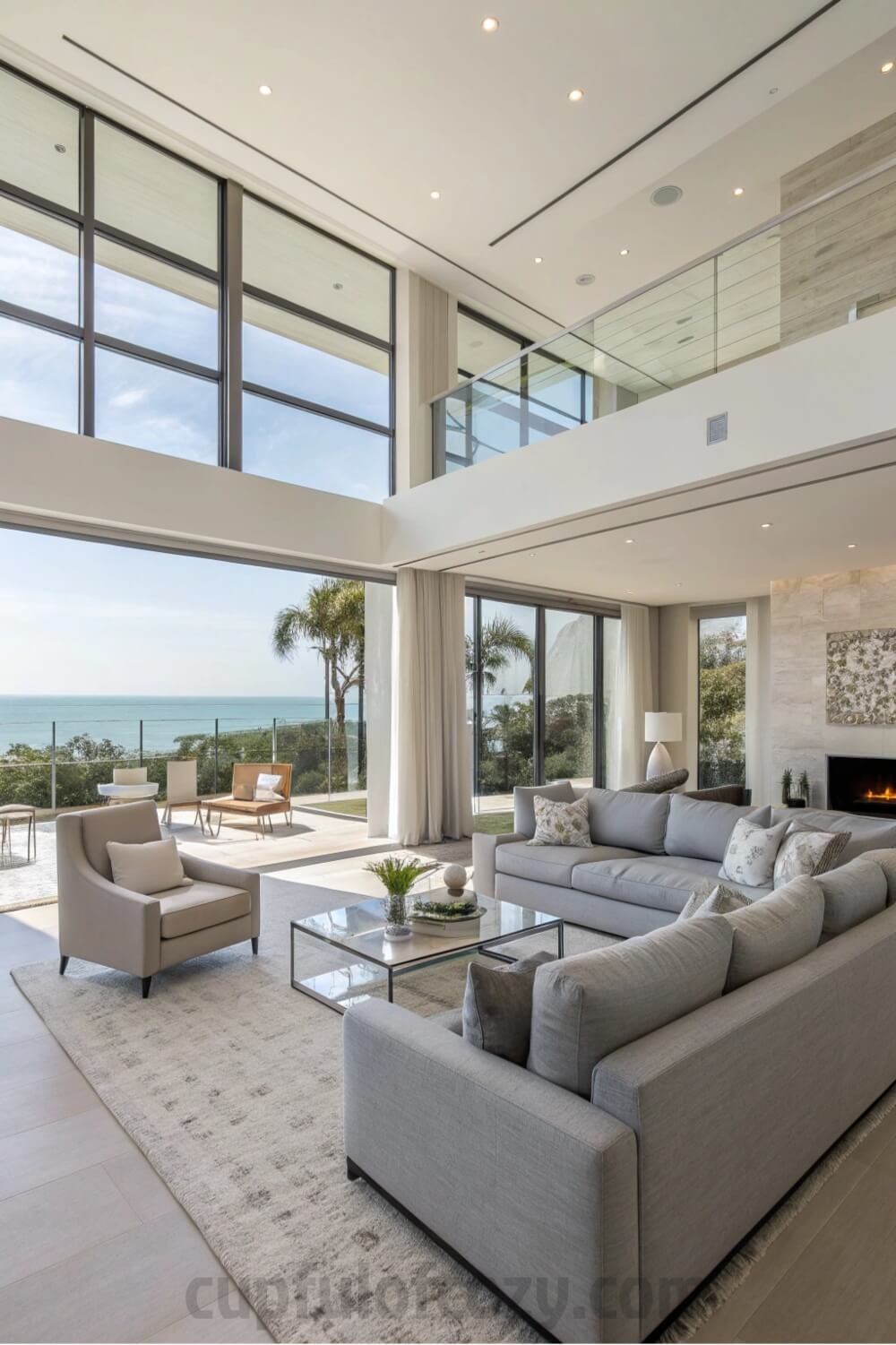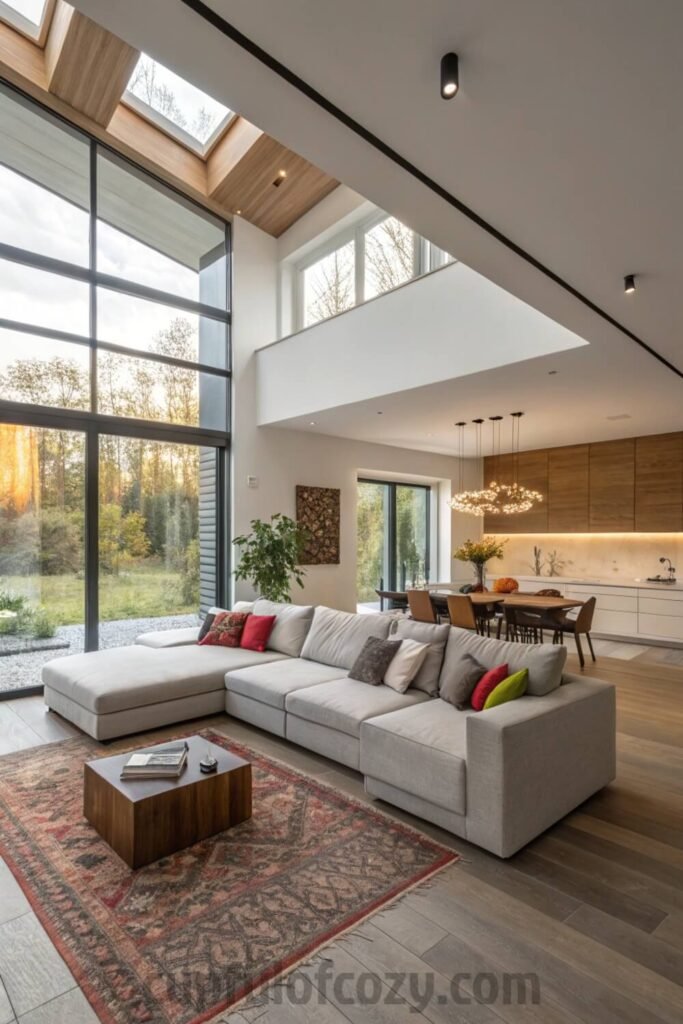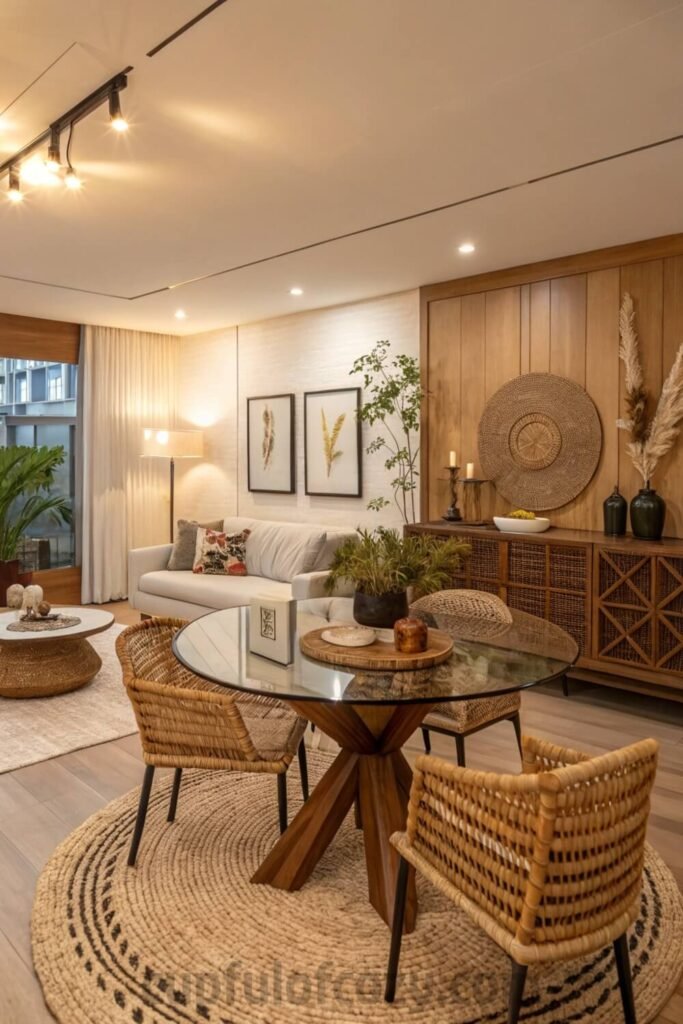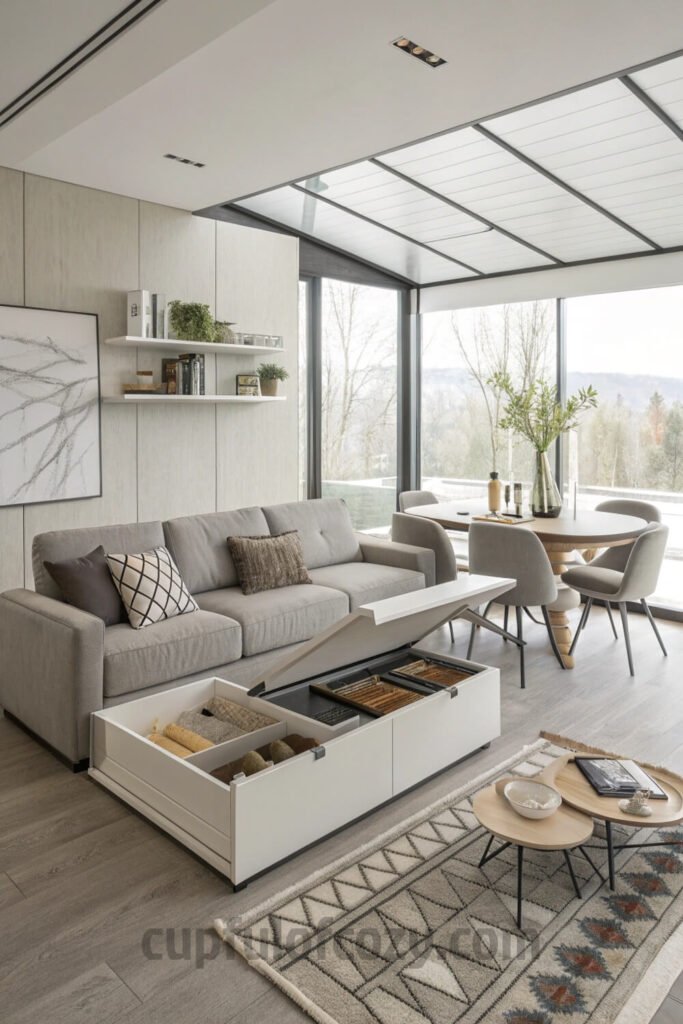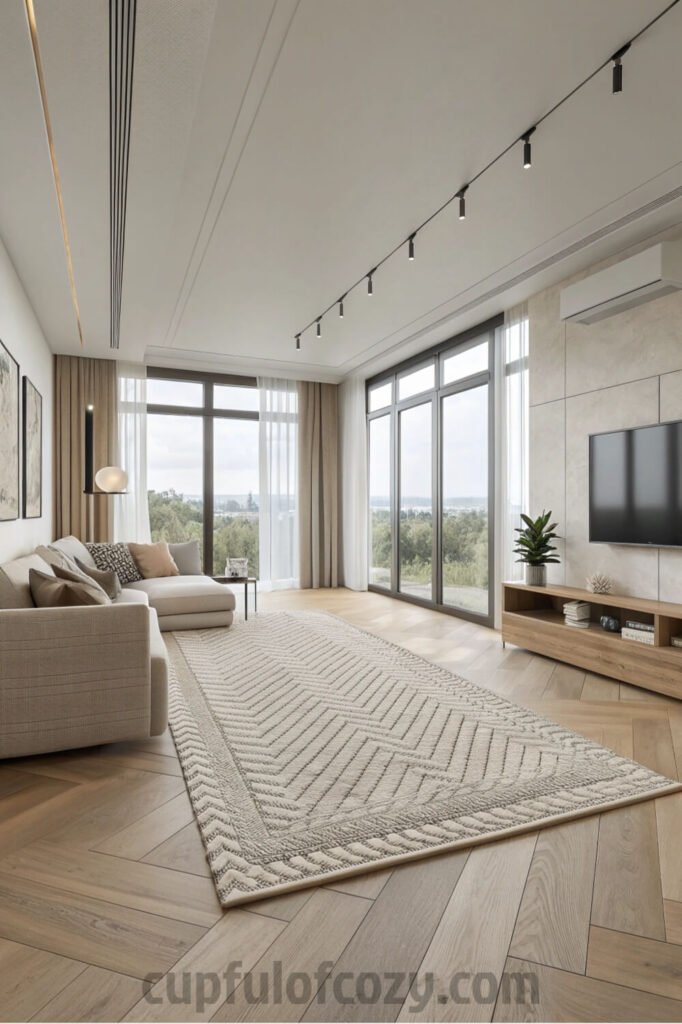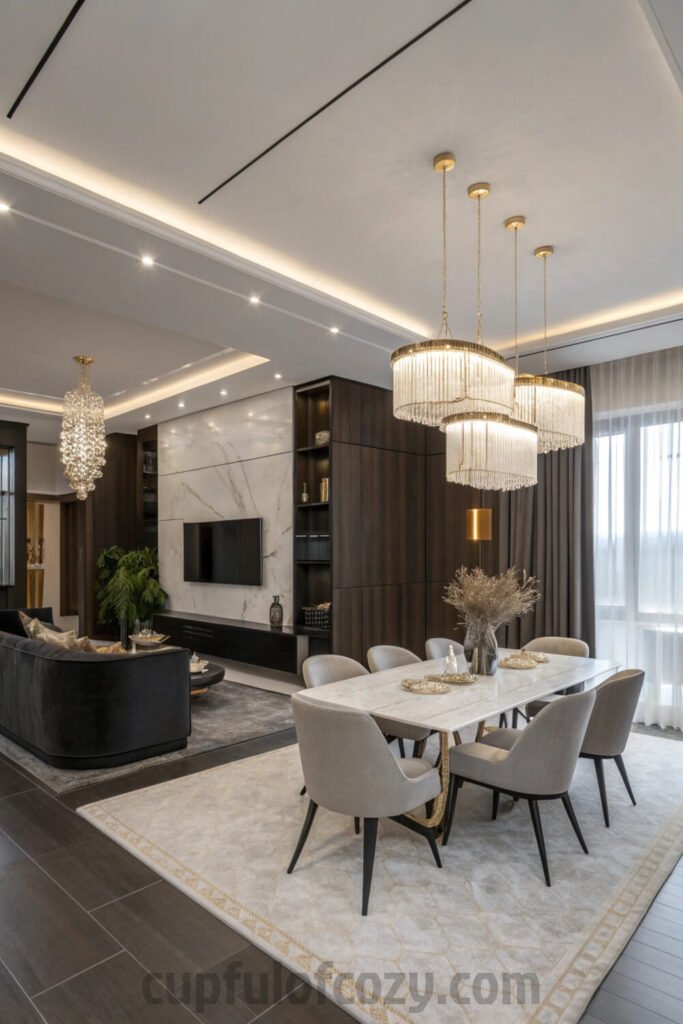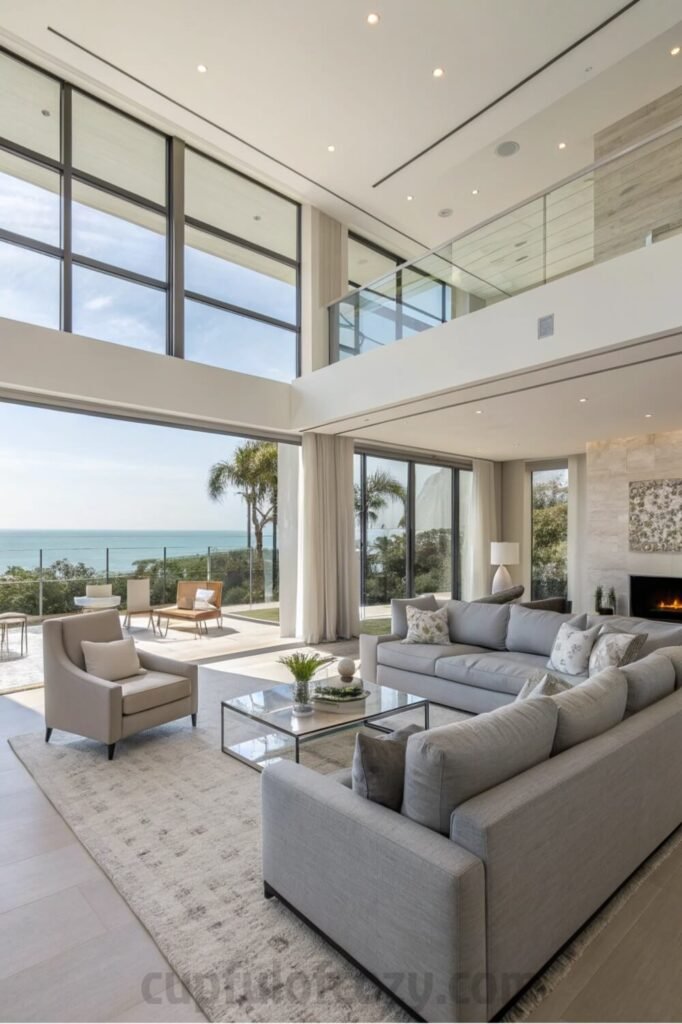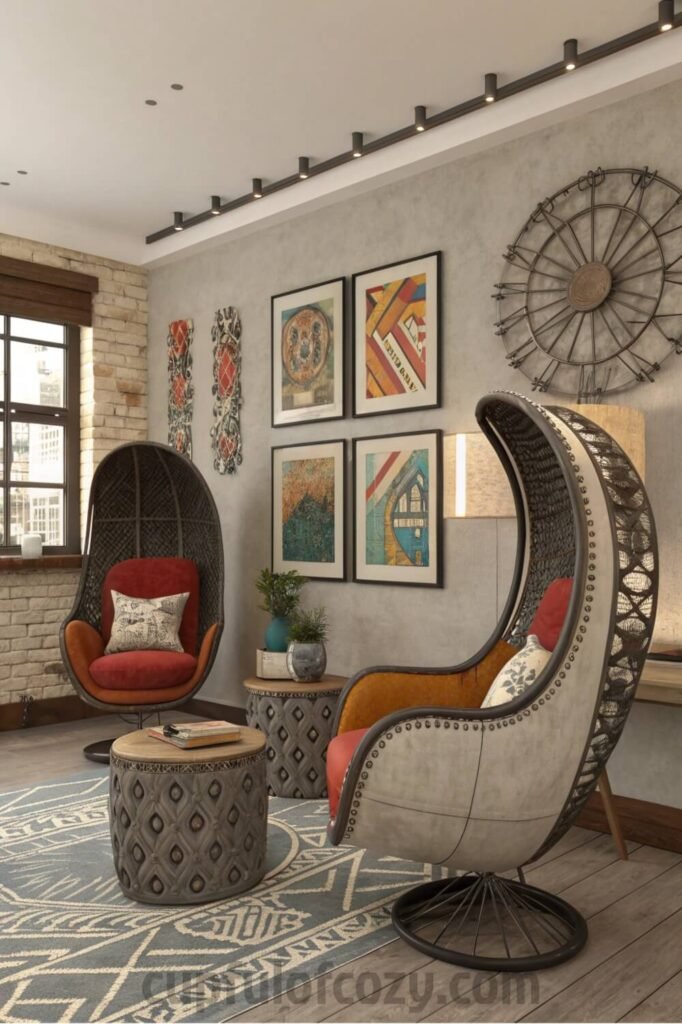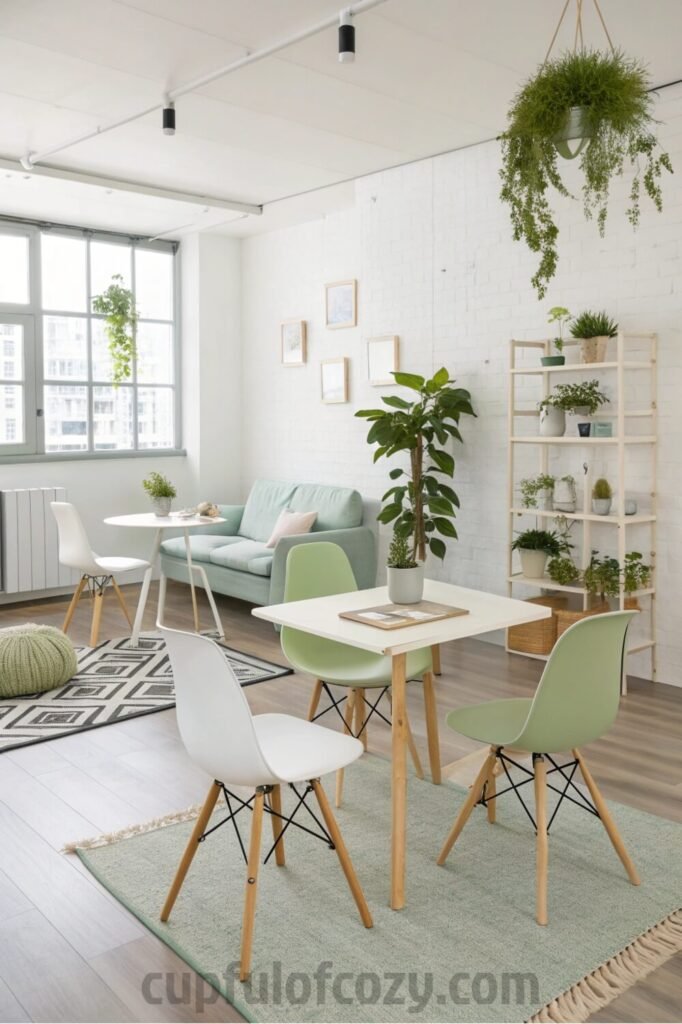I’m sitting in my cousin’s brand new place right now, and she’s literally losing her mind trying to figure out how to make her rectangle living room work without it looking like a furniture showroom threw up everywhere. Sound familiar?
I’ve been obsessing over this stuff lately: probably because half my friends are moving into these gorgeous open-concept spaces and then panicking about how to actually live in them. So I’ve been taking notes, screenshotting inspiration, and yes, maybe stalking a few too many interior design accounts. Here’s what I’ve learned about making rectangle furniture work wonders in open-plan homes.
1. Define Zones with Furniture Placement
Here’s the thing about open-plan spaces: your furniture needs to do the talking since you don’t have walls doing it for you. I saw this approach at my friend Maya’s place last month, and I literally gasped. She positioned her L-shaped sectional so it creates this invisible barrier between her living area and dining space. It’s like having a wall, but you can still see everything and the light flows through perfectly.
The back of the sofa faces the dining table, giving each space its own identity without making anything feel closed off. My mom always said furniture should have a purpose beyond just sitting there, and Maya’s setup proves that point beautifully.
What gets me excited about this approach is how intentional it feels. That console table behind your couch isn’t just storage: it’s creating a pathway and defining space. Your dining table becomes the anchor for that zone, while your sofa anchors the living area. No more pushing everything against the walls and hoping for the best.
2. Mix Furniture Shapes
All rectangles everywhere can start feeling like you’re living in a geometry textbook. I learned this the hard way when I first moved out and literally everything I owned was rectangular. My apartment looked like a very boring game of Tetris, and my sister still teases me about it.
The solution? Breaking up all those straight lines with some curves. Your sleek rectangular dining table paired with a round coffee table, or those sharp-edged side tables next to a curvy accent chair. I got this inspiration from a café in Santa Fe where they mixed these gorgeous hand-carved round tables with modern rectangular benches, and the whole vibe was just incredible.
My sister did this in her place with a round ottoman that doubles as extra seating, and it completely changed the energy. Suddenly her very linear living room felt more organic and welcoming. Plus, round pieces are usually easier to navigate around: no more bruised shins from sharp corners, which is honestly a blessing for someone as clumsy as me.
3. Use Multifunctional Pieces
Let’s be real about how expensive furniture is these days. When did a decent couch start costing more than my car? This is exactly why I’m all about pieces that work overtime, and my neighbor Sarah has mastered this concept.
She has this incredible storage bench that sits at the foot of her sectional. It holds throw blankets, serves as extra seating when people come over, and sometimes becomes a makeshift laptop station. One piece, like five functions. That’s the kind of furniture multitasking that makes sense when you’re working with limited space but unlimited stuff.
- Before you hit “buy” on your next decor order, there’s a free 10-second step you should never skip: checking Rakuten (Ebates). I simply find the store name, click the deal, and shop like normal, and Rakuten sends me real cashback! Prices keep climbing everywhere, but this is one way to get a little back on the things you were going to purchase anyway. New members even get a $30 bonus when they spend $30 — which means your first order could pay you back instantly. Don’t miss out again. Click here to sign up and save money!
*Disclosure: This post includes affiliate links. I may earn a small commission if you join Rakuten through my link — but it doesn’t cost you anything extra. In fact, you’ll actually save more!
I’m talking about dining tables that extend for when your whole family shows up unannounced, ottomans with hidden storage for all the random stuff that accumulates (we all have that drawer of miscellaneous cables, don’t lie), and coffee tables with shelves underneath for books you’re definitely going to read someday.
4. Choose Proportional Furniture
Size matters, people! I once helped my friend pick out furniture for her long, narrow living room, and we almost made the mistake of getting this massive sectional that would’ve made the space feel like a furniture warehouse. That would’ve been a disaster.
Instead, we went with a modular sofa system where she could add or remove pieces depending on the situation. The chaise lounge can detach when she needs more floor space for yoga or when her nieces come over and need room to spread out their art projects everywhere.
What I’ve learned is that measuring everything twice and really visualizing how people will move through the space saves so much heartache later. That gorgeous oversized coffee table might look wonderful in the store, but if people have to do some weird sideways shuffle to get around it in your actual living room, it’s not the right fit. Think about traffic flow: where do people naturally want to walk, and how can your furniture support that instead of fighting it?
5. Create Visual Flow with Flooring and Rugs
I noticed this approach when I was house-sitting for my aunt last summer. She has this beautiful open-plan space with consistent hardwood throughout, but she uses different area rugs to basically create “rooms” within the big space. It’s such a smart move.
Under her dining set, she has this gorgeous woven rug that defines the eating area. In the living room, a plush rug anchors all the seating. It’s like each zone has its own foundation, but everything still flows together because the flooring underneath is consistent.
The rugs also add warmth and texture, which is crucial in open-plan spaces that can sometimes feel a little echo-y or cold. There’s something psychologically cozy about having defined spaces to sink into. It makes the whole area feel more intimate even though it’s technically one big room, and honestly, that feeling of coziness is what makes a house feel like home.
6. Use Lighting to Define Spaces
Lighting is basically transformative, and I figured this out when I stayed at this Airbnb in Portland that had the most incredible pendant lights hanging over different areas. Each zone had its own lighting personality, which made the whole space feel intentional and designed.
My cousin recently installed these beautiful brass pendant lights over her kitchen island, and they completely transformed how that area feels. Suddenly it became this inviting gathering spot instead of just a place to prep food. It reminded me of my grandmother’s kitchen, where the warm light over her table made everyone want to linger after dinner.
Think pendant lights over your dining table creating this intimate eating atmosphere, while floor lamps near your seating area provide that perfect reading light. Maybe some string lights or a statement chandelier over your main living area to create a focal point. Lighting tells you where to focus your attention and creates mood in each zone.
7. Wall Utilization for Storage and Decoration
Walls are your best friends when floor space is at a premium. I’m obsessed with floating shelves right now: they give you storage without taking up any floor real estate, and they make walls feel taller and more interesting. My dad always said to use every inch of space wisely, and vertical storage definitely fits that philosophy.
I saw this incredible setup at my friend’s place where she created a whole gallery wall with floating shelves mixed in with artwork and plants. It became this beautiful focal point that draws your eye up and makes the ceiling feel higher. Plus, she can display books, plants, and all those little objects that make a space feel personal.
Mirrors are another wall hack that I learned from my mom. She strategically placed this large round mirror across from her patio doors, and it basically doubled the natural light and made the space feel twice as big. It’s like having an extra window but without the construction costs. Sometimes the simplest tricks are the most effective.
8. Float Furniture to Create Airflow
This was probably the hardest concept for me to wrap my head around because my instinct is always to push furniture against walls. It feels safer somehow, like everything is anchored and secure. But floating furniture in your space creates so much better flow and makes everything feel more intentional.
I remember walking into this friend’s apartment and being struck by how spacious it felt, even though it wasn’t actually that big. She had pulled her sofa away from the wall, creating a walkway behind it that connected the living area to the dining space. It made the whole place feel more open and less like furniture was just stuck wherever it fit.
Try pulling your sofa a few feet into the room and see how it changes the energy. You might be surprised at how much more dynamic and welcoming the space feels when furniture has room to breathe. It’s counterintuitive, but giving up a little floor space actually makes everything feel bigger.
9. Introduce Architectural or Artistic Statement Pieces
Sometimes you need something unexpected to make a space feel special. I learned this from spending way too much time scrolling through design accounts, but also from noticing what makes certain spaces stick in my memory. There’s always that one piece that makes you stop and really look.
A sculptural chair in a corner, an interesting floor lamp, or even a large plant in a beautiful pot can serve as these anchor points that give your eye something interesting to land on. My friend has this incredible vintage leather chair that doesn’t match anything else in her living room, but it’s positioned perfectly in a corner and it makes the whole space feel more curated and personal.
These pieces don’t have to be expensive. I found this wonderful woven basket at a local market that I use as a plant stand, and it adds so much texture and visual interest to my corner. It’s about finding pieces that have personality and placing them thoughtfully. My grandfather used to say that every room needs at least one conversation starter, and he was right.
10. Opt for Portable and Lightweight Furniture
Life changes, and your furniture should be able to roll with it. I can’t tell you how many times I’ve rearranged my living room just because I was bored or because the seasons changed and I wanted a different vibe. Having flexible pieces makes this so much easier.
Lightweight accent chairs that you can easily move around, nesting tables that can spread out when you need more surface space, or even ottomans on wheels give you flexibility to adapt your space for different activities or moods. Last month, I helped my sister rearrange her living room for a game night, and because most of her furniture was easy to move, we created this incredible setup with floor cushions and a low coffee table.
After the party, everything went right back to its original spot. That kind of flexibility is wonderful when you’re living in an open-plan space that needs to serve multiple functions. It’s like having a room that can transform based on what you need it to do.
Final Thoughts
The thing about open-plan living is that it’s all about being intentional with your choices while keeping things flexible enough to actually live in. These rectangle furniture ideas aren’t just about following rules: they’re about creating spaces that feel good to be in, that work for your actual life, and that make you excited to come home.
What I love most about these ideas is that you don’t have to implement all of them at once. Start with what speaks to you, what fits your budget, and what addresses your biggest pain points. Your space will evolve, and that’s exactly how it should be.
Related posts:
15 Romantic Shabby Chic Farmhouse Living Room Ideas That Will Make Your Heart Skip a Beat
20 Stunning Country Chic Living Room Ideas To Wow Your Guests
How to Create a Cozy Warm Transitional Living Room That Feels Like Home
20 Summer Beachy Living Room Ideas for a Breezy & Relaxed Vibe (Coastal-Inspired Decor)
- Before buying anything online, check Rakuten (formerly Ebates) — either with the browser extension or directly on Rakuten.com. Just type in your store, click the current deal, and shop as usual. Every purchase earns you cashback that can be mailed to you or sent via PayPal. In today’s economy, even a few dollars back can turn into a Starbucks latte, McDonald’s fries for the kids, or a little treat you don’t have to budget for. If you’ve never used Rakuten before, you’re missing out on free money — and right now, you’ll even get a $30 bonus when you spend your first $30. Click here to sign up and stop letting your online orders steal from you. Click here to sign up and save money!
*Disclosure: This post includes affiliate links. I may earn a small commission if you join Rakuten through my link — but it doesn’t cost you anything extra. In fact, you’ll actually save more!

